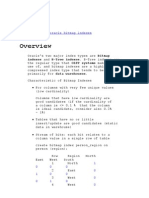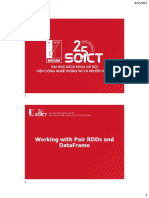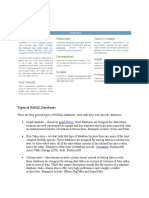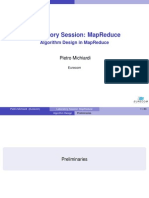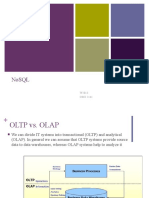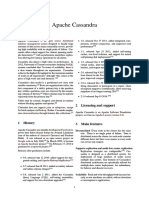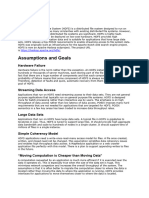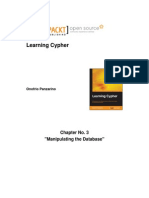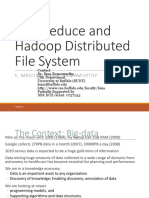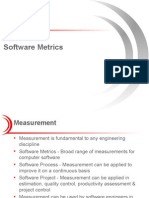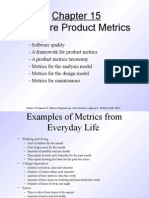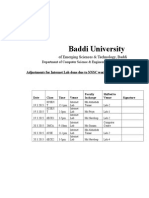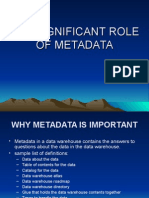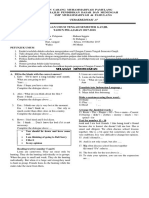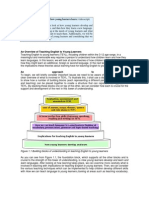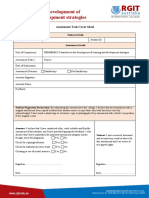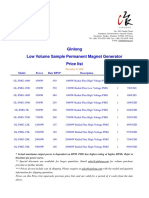MapReduce and Hadoop
Distributed File System
1
K. MADURAI AND B. RAMAMURTHY
Contact:
Dr. Bina Ramamurthy
CSE Department
University at Buffalo (SUNY)
bina@buffalo.edu
http://www.cse.buffalo.edu/faculty/bina
Partially Supported by
NSF DUE Grant: 0737243
CCSCNE 2009 Palttsburg, April 24 2009 B.Ramamurthy & K.Madurai
The Context: Big-data
2
Man on the moon with 32KB (1969); my laptop had 2GB RAM (2009)
Google collects 270PB data in a month (2007), 20000PB a day (2008)
2010 census data is expected to be a huge gold mine of information
Data mining huge amounts of data collected in a wide range of domains
from astronomy to healthcare has become essential for planning and
performance.
We are in a knowledge economy.
Data is an important asset to any organization
Discovery of knowledge; Enabling discovery; annotation of data
We are looking at newer
programming models, and
Supporting algorithms and data structures.
NSF refers to it as “data-intensive computing” and industry calls it “big-
data” and “cloud computing”
CCSCNE 2009 Palttsburg, April 24 2009 B.Ramamurthy & K.Madurai
Purpose of this talk
3
To provide a simple introduction to:
“Thebig-data computing” : An important
advancement that has a potential to impact
significantly the CS and undergraduate curriculum.
A programming model called MapReduce for
processing “big-data”
A supporting file system called Hadoop Distributed
File System (HDFS)
To encourage educators to explore ways to infuse
relevant concepts of this emerging area into their
curriculum.
CCSCNE 2009 Palttsburg, April 24 2009 B.Ramamurthy & K.Madurai
The Outline
4
Introduction to MapReduce
From CS Foundation to MapReduce
MapReduce programming model
Hadoop Distributed File System
Relevance to Undergraduate Curriculum
Demo (Internet access needed)
Our experience with the framework
Summary
References
CCSCNE 2009 Palttsburg, April 24 2009 B.Ramamurthy & K.Madurai
MapReduce
5
CCSCNE 2009 Palttsburg, April 24 2009 B.Ramamurthy & K.Madurai
What is MapReduce?
6
MapReduce is a programming model Google has used
successfully is processing its “big-data” sets (~ 20000 peta
bytes per day)
Users specify the computation in terms of a map and a
reduce function,
Underlying runtime system automatically parallelizes the
computation across large-scale clusters of machines, and
Underlying system also handles machine failures,
efficient communications, and performance issues.
-- Reference: Dean, J. and Ghemawat, S. 2008. MapReduce:
simplified data processing on large clusters. Communication of
ACM 51, 1 (Jan. 2008), 107-113.
CCSCNE 2009 Palttsburg, April 24 2009 B.Ramamurthy & K.Madurai
From CS Foundations to MapReduce
7
Consider a large data collection:
{web, weed, green, sun, moon, land, part, web, green,
…}
Problem: Count the occurrences of the different words
in the collection.
Lets design a solution for this problem;
We will start from scratch
We will add and relax constraints
We will do incremental design, improving the solution for
performance and scalability
CCSCNE 2009 Palttsburg, April 24 2009 B.Ramamurthy & K.Madurai
Word Counter and Result Table
8
{web, weed, green, sun, moon, land, part, web 2
web, green,…}
weed 1
green 2
Data Main
sun 1
collection
moon 1
land 1
part 1
WordCounter
parse( )
count( )
DataCollection ResultTable
CCSCNE 2009 Palttsburg, April 24 2009 B.Ramamurthy & K.Madurai
Multiple Instances of Word Counter
9
web 2
weed 1
green 2
Data
Main sun 1
collection
moon 1
Thread
land 1
1..*
WordCounter part 1
parse( )
count( )
DataCollection ResultTable Observe:
Multi-thread
Lock on shared data
CCSCNE 2009 Palttsburg, April 24 2009 B.Ramamurthy & K.Madurai
Improve Word Counter for Performance
10 N No need for lock
Main oweb 2
weed 1
Data green 2
collection
sun 1
moon 1
Thread
land 1
1..*
1..* part 1
Parser Counter
WordList
Separate counters
DataCollection ResultTable
KEY web weed green sun moon land part web green …….
VALUE
CCSCNE 2009 Palttsburg, April 24 2009 B.Ramamurthy & K.Madurai
Peta-scale Data
11
Main web 2
weed 1
green 2
Data sun 1
collection moon 1
Thread
land 1
1..*
1..* part 1
Parser Counter
DataCollection WordList ResultTable
KEY web weed green sun moon land part web green …….
VALUE
CCSCNE 2009 Palttsburg, April 24 2009 B.Ramamurthy & K.Madurai
Addressing the Scale Issue
12
Single machine cannot serve all the data: you need a distributed
special (file) system
Large number of commodity hardware disks: say, 1000 disks 1TB
each
Issue: With Mean time between failures (MTBF) or failure rate of
1/1000, then at least 1 of the above 1000 disks would be down at a
given time.
Thus failure is norm and not an exception.
File system has to be fault-tolerant: replication, checksum
Data transfer bandwidth is critical (location of data)
Critical aspects: fault tolerance + replication + load balancing,
monitoring
Exploit parallelism afforded by splitting parsing and counting
Provision and locate computing at data locations
CCSCNE 2009 Palttsburg, April 24 2009 B.Ramamurthy & K.Madurai
Peta-scale Data
13
Main web 2
weed 1
green 2
Data sun 1
collection moon 1
Thread
land 1
1..*
1..* part 1
Parser Counter
DataCollection WordList ResultTable
KEY web weed green sun moon land part web green …….
VALUE
CCSCNE 2009 Palttsburg, April 24 2009 B.Ramamurthy & K.Madurai
Data Peta Scale Data is Commonly Distributed
collection
14
Main web 2
Data
collection weed 1
green 2
Data sun 1
collection moon 1
Thread
land 1
1..*
Data part 1
1..*
collection Parser Counter
Data DataCollection WordList ResultTable
collection Issue: managing the
large scale data
KEY web weed green sun moon land part web green …….
VALUE
CCSCNE 2009 Palttsburg, April 24 2009 B.Ramamurthy & K.Madurai
Data Write Once Read Many (WORM) data
collection
15
Main web 2
Data
collection weed 1
green 2
Data sun 1
collection moon 1
Thread
land 1
1..*
Data part 1
1..*
collection Parser Counter
Data DataCollection WordList ResultTable
collection
KEY web weed green sun moon land part web green …….
VALUE
CCSCNE 2009 Palttsburg, April 24 2009 B.Ramamurthy & K.Madurai
Data WORM Data is Amenable to Parallelism
collection
16
Main
Data
collection
1. Data with WORM
characteristics : yields
Data to parallel processing;
collection 2. Data without
Thread dependencies: yields
1..*
to out of order
Data processing
1..*
collection Parser Counter
Data DataCollection WordList ResultTable
collection
CCSCNE 2009 Palttsburg, April 24 2009 B.Ramamurthy & K.Madurai
Divide and Conquer: Provision Computing at Data Location
17
Main For our example,
#1: Schedule parallel parse tasks
Data Thread
#2: Schedule parallel count tasks
collection
1..*
1..*
Parser Counter
One node DataCollection WordList ResultTable This is a particular solution;
Main
Lets generalize it:
Data Thread
Our parse is a mapping operation:
collection Parser
1..*
1..*
Counter
MAP: input <key, value> pairs
DataCollection WordList ResultTable
Main
Our count is a reduce operation:
REDUCE: <key, value> pairs reduced
Data Thread
collection
1..*
1..*
Counter
Map/Reduce originated from Lisp
Parser
DataCollection WordList ResultTable
But have different meaning here
Main
Runtime adds distribution + fault
Data Thread tolerance + replication + monitoring +
collection Parser
1..*
1..*
Counter
load balancing to your base application!
DataCollection WordList ResultTable
CCSCNE 2009 Palttsburg, April 24 2009 B.Ramamurthy & K.Madurai
Mapper and Reducer
18
Remember: MapReduce is simplified processing for larger data sets:
MapReduce Version of WordCount Source code
CCSCNE 2009 Palttsburg, April 24 2009 B.Ramamurthy & K.Madurai
Map Operation
19
web 1
MAP: Input data <key, value> pair weed
green
1
sun 1
moon 1
land 1
part 1
Map web 1
Data green 1
Collection: split1 Split the data to … 1
Supply multiple KEY VALUE
processors
Data Map
Collection: split 2
……
Data
…
Collection: split n
CCSCNE 2009 Palttsburg, April 24 2009 B.Ramamurthy & K.Madurai
Reduce Operation
20
MAP: Input data <key, value> pair
REDUCE: <key, value> pair <result>
Reduce
Map
Data
Collection: split1 Split the data to
Supply multiple
processors
Reduce
Data Map
Collection: split 2
……
Data
…
Reduce
Collection: split n Map
CCSCNE 2009 Palttsburg, April 24 2009 B.Ramamurthy & K.Madurai
Large scale data splits
Map <key, 1> Reducers (say, Count)
Parse-hash
Count
P-0000
, count1
Parse-hash
Count
P-0001
, count2
Parse-hash
Count
P-0002
Parse-hash ,count3
CCSCNE 2009 Palttsburg, April 24 2009 21 B.Ramamurthy & K.Madurai
MapReduce Example in my operating systems class
22
combine part0
map reduce
Cat split
reduce part1
split map combine
Bat
map part2
split combine reduce
Dog
split map
Other
Words
(size:
TByte)
CCSCNE 2009 Palttsburg, April 24 2009 B.Ramamurthy & K.Madurai
MapReduce Programming
Model
23
CCSCNE 2009 Palttsburg, April 24 2009 B.Ramamurthy & K.Madurai
MapReduce programming model
24
Determine if the problem is parallelizable and solvable using
MapReduce (ex: Is the data WORM?, large data set).
Design and implement solution as Mapper classes and
Reducer class.
Compile the source code with hadoop core.
Package the code as jar executable.
Configure the application (job) as to the number of mappers
and reducers (tasks), input and output streams
Load the data (or use it on previously available data)
Launch the job and monitor.
Study the result.
Detailed steps.
CCSCNE 2009 Palttsburg, April 24 2009 B.Ramamurthy & K.Madurai
MapReduce Characteristics
25
Very large scale data: peta, exa bytes
Write once and read many data: allows for parallelism without
mutexes
Map and Reduce are the main operations: simple code
There are other supporting operations such as combine and partition
(out of the scope of this talk).
All the map should be completed before reduce operation starts.
Map and reduce operations are typically performed by the same
physical processor.
Number of map tasks and reduce tasks are configurable.
Operations are provisioned near the data.
Commodity hardware and storage.
Runtime takes care of splitting and moving data for operations.
Special distributed file system. Example: Hadoop Distributed File
System and Hadoop Runtime.
CCSCNE 2009 Palttsburg, April 24 2009 B.Ramamurthy & K.Madurai
Classes of problems “mapreducable”
26
Benchmark for comparing: Jim Gray’s challenge on data-
intensive computing. Ex: “Sort”
Google uses it (we think) for wordcount, adwords, pagerank,
indexing data.
Simple algorithms such as grep, text-indexing, reverse
indexing
Bayesian classification: data mining domain
Facebook uses it for various operations: demographics
Financial services use it for analytics
Astronomy: Gaussian analysis for locating extra-terrestrial
objects.
Expected to play a critical role in semantic web and web3.0
CCSCNE 2009 Palttsburg, April 24 2009 B.Ramamurthy & K.Madurai
Scope of MapReduce
27
Data size: small
Pipelined Instruction level
Concurrent Thread level
Service Object level
Indexed File level
Mega Block level
Virtual System Level
Data size: large
CCSCNE 2009 Palttsburg, April 24 2009 B.Ramamurthy & K.Madurai
Hadoop
28
CCSCNE 2009 Palttsburg, April 24 2009 B.Ramamurthy & K.Madurai
What is Hadoop?
29
At Google MapReduce operation are run on a special
file system called Google File System (GFS) that is
highly optimized for this purpose.
GFS is not open source.
Doug Cutting and Yahoo! reverse engineered the
GFS and called it Hadoop Distributed File System
(HDFS).
The software framework that supports HDFS,
MapReduce and other related entities is called the
project Hadoop or simply Hadoop.
This is open source and distributed by Apache.
CCSCNE 2009 Palttsburg, April 24 2009 B.Ramamurthy & K.Madurai
Basic Features: HDFS
30
Highly fault-tolerant
High throughput
Suitable for applications with large data sets
Streaming access to file system data
Can be built out of commodity hardware
CCSCNE 2009 Palttsburg, April 24 2009 B.Ramamurthy & K.Madurai
Hadoop Distributed File System
31
HDFS Server Master node
HDFS Client
Application
Local file
system
Block size: 2K
Name Nodes
Block size: 128M
More details: We discuss this in great detail in my Operating Replicated
Systems course
CCSCNE 2009 Palttsburg, April 24 2009 B.Ramamurthy & K.Madurai
Hadoop Distributed File System
32
HDFS Server Master node
blockmap
HDFS Client heartbeat
Application
Local file
system
Block size: 2K
Name Nodes
Block size: 128M
More details: We discuss this in great detail in my Operating Replicated
Systems course
CCSCNE 2009 Palttsburg, April 24 2009 B.Ramamurthy & K.Madurai
Relevance and Impact on Undergraduate courses
33
Data structures and algorithms: a new look at traditional
algorithms such as sort: Quicksort may not be your
choice! It is not easily parallelizable. Merge sort is better.
You can identify mappers and reducers among your
algorithms. Mappers and reducers are simply place
holders for algorithms relevant for your applications.
Large scale data and analytics are indeed concepts to
reckon with similar to how we addressed “programming
in the large” by OO concepts.
While a full course on MR/HDFS may not be warranted,
the concepts perhaps can be woven into most courses in
our CS curriculum.
CCSCNE 2009 Palttsburg, April 24 2009 B.Ramamurthy & K.Madurai
Demo
34
VMware simulated Hadoop and MapReduce demo
Remote access to NEXOS system at my Buffalo office
5-node HDFS running HDFS on Ubuntu 8.04
1 –name node and 4 data-nodes
Each is an old commodity PC with 512 MB RAM,
120GB – 160GB external memory
Zeus (namenode), datanodes: hermes, dionysus,
aphrodite, athena
CCSCNE 2009 Palttsburg, April 24 2009 B.Ramamurthy & K.Madurai
Summary
35
We introduced MapReduce programming model for
processing large scale data
We discussed the supporting Hadoop Distributed
File System
The concepts were illustrated using a simple
example
We reviewed some important parts of the source
code for the example.
Relationship to Cloud Computing
CCSCNE 2009 Palttsburg, April 24 2009 B.Ramamurthy & K.Madurai
References
36
1. Apache Hadoop Tutorial: http://hadoop.apache.org
http://hadoop.apache.org/core/docs/current/mapred_tu
torial.html
2. Dean, J. and Ghemawat, S. 2008. MapReduce:
simplified data processing on large clusters.
Communication of ACM 51, 1 (Jan. 2008), 107-113.
3. Cloudera Videos by Aaron Kimball:
http://www.cloudera.com/hadoop-training-basic
4. http://www.cse.buffalo.edu/faculty/bina/mapreduce.html
CCSCNE 2009 Palttsburg, April 24 2009 B.Ramamurthy & K.Madurai


